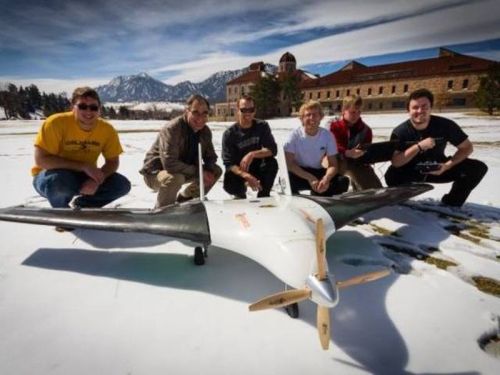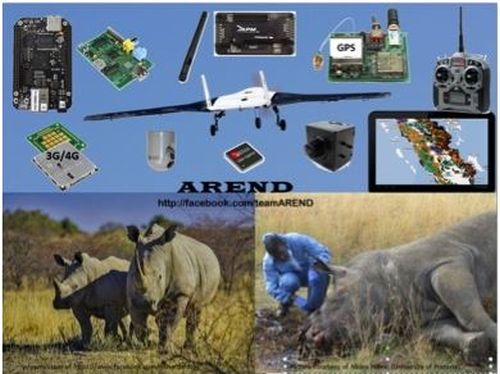Poaching is one of the world’s most organized and largest crime industries. Several animals like, rhino, elephants, tiger, gorilla, sharks, whales and many other species are being ruthlessly poached and extensively being pushed towards extinction. Without human intervention, these animals cannot protect themselves from the poachers. There are several anti- poaching communities worldwide guarding the last few animals left in the wild, however, the effort is still not enough.
An international student team (Team AREND) in their attempt to save the South African rhinoceros, have associated with the non-profit Wildlife Protection Solutions. In South Africa, there are some 20,000 rhinoceros left in the wild and this constitutes 80 percent of the world’s rhinoceros population. The rhinoceros horns are of prime importance to poachers and which can alone fetch them around $300,000 in the international market, especially in South East Asia and China where these are used in traditional medicines.
The Team AREND is starting a Kickstarter program to collect the fund for an unmanned drone that they have designed and hope to build and fly in their battle against the poachers. The team included students from South Africa, The United States, Germany and Finland and being guided by Dr. Jean Koster from the University of Colorado at Boulder. The team is competing in the Wildlife Conservation UAV Challenge, which require the team to design and operate an unmanned aerial vehicle (UAV) to assist in anti-poaching operations in South Africa.
The competition requires the team to meet certain criteria while design and building the flying drone. The gross weight of the drone should be less than 55 lbs, able to fly continuously for minimum 120 minutes and landing accuracy of a 30 foot radius. Apart from these the drone should also meet all safety guidelines as described by the Academy of Model Aeronautics.
The other objectives outlined are that the auto controlled radio communication should have a range of 20 km, resolution for the camera should be ideally 5 centimeter line separation at 300 ft. AGL (above ground level). The total budget for the drones without sensors has been fixed below $5000. And any out of the box design beyond the given specification can make the team earn bonus points. Team AREND, however, proposes to design a drone using around an amount of $1000.
The Team AREND requires a fund of approximately around $20,000 to be used in the various areas of development such as developing a hybrid electric engine for the flying drones, construction materials for wing components & fuselage, to name a few. The remote controlled drone developed over the time will be flying in the wild and armed with diverse day/night and other sensors to identify and differentiate poachers and travelers as well as between rhinoceros and other wildlife.
The poaching has been nearly doubled in the last few years, this has led to 90% decline in the Rhino population, and the wildlife park rangers are not enough to check these poaching activities alone. The poaching rate will soon exceed the birth rate and at this rate, the rhino would soon extinct. Even if we curb the poachers immediately, the rhino population would still take years to recuperate as they mate and reproduce once in every 3-5 years.
The project is not enough to fight a battle against the organized poaching criminals, nevertheless, it is a step forward and the presence of such drones in the air will definitely restrain or at least slow down the poachers.





